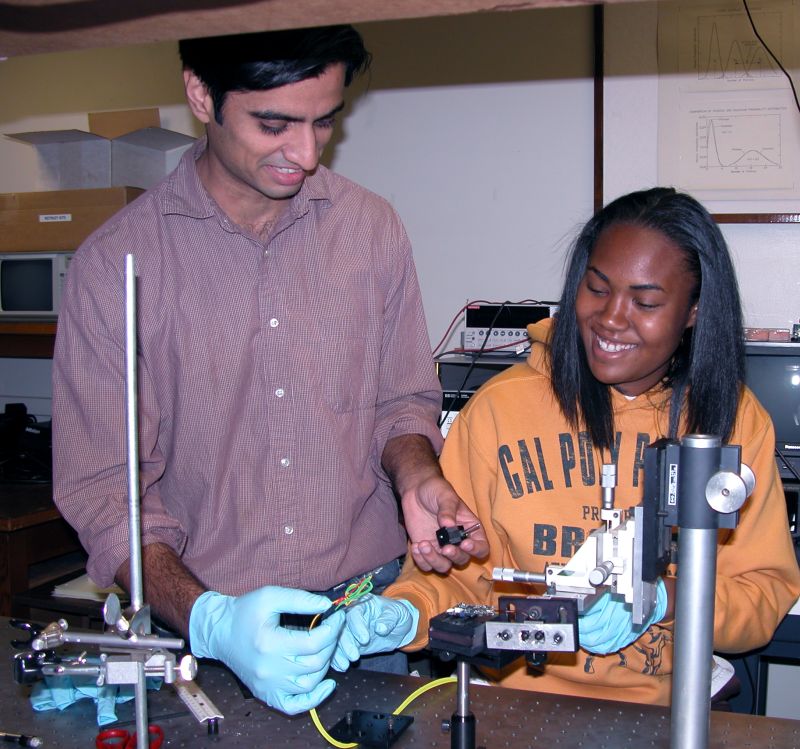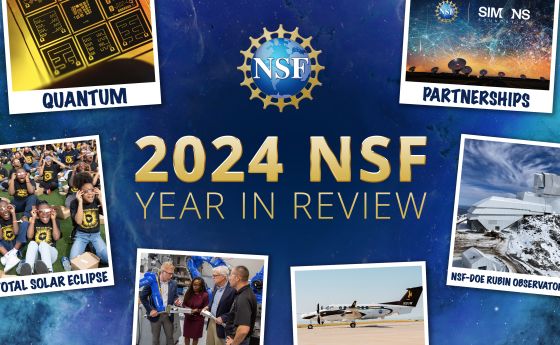
Sparking scientific curiosity and recruiting talent for the benefit of our nation
By Sethuraman Panchanathan, 15th Director of the National Science Foundation
It starts with a spark. A STEM spark. A moment of inspiration, such as watching a human walk on the moon for the first time or viewing the first image of a black hole, produced by eight telescopes around the globe forming an earth-sized lens. A moment when you ask a question, become curious, innovate to find a solution or want to know more about the world around you. When you have a teacher or a mentor, who helps you solve a real problem, and you get inspired and curious to learn more.
U.S. National Science Foundation
When the demographics of the research community are considered alongside the demographics of the nation, the difference, or gap, between the two are the missing millions. We must rapidly double, triple and quadruple the number of women, African Americans, Hispanic and Latinos, American Indians, Alaskan and Hawaiian Natives and Pacific Islanders in STEM fields. Together, we need to create pathways into the STEM community for the missing millions.
We need every person who is interested in pursuing a STEM career -- from every demographic, socio-economic group and geographic area -- to be able to do so. The U.S. National Science Foundation calls on the academic community to help us foster this talent, by building on-ramps to prepare a diverse STEM workforce, expanding our reach into communities across the country, and nurturing partnerships that foster communities of inclusivity and mentorship.
Building on-ramps to STEM careers
Tomorrow’s science and engineering advances will be accomplished by people who are being educated today in our nation’s schools, ranging from K-12 through graduate school, as well as in informal environments.
We must prioritize STEM learning at an early stage in life and spark curiosity-driven thinking. One way we can do this is by ensuring that students have access to research opportunities.
Research Experiences for Undergraduates is one of NSF’s key initiatives focused on supporting undergraduate research, providing competitive summer research opportunities for undergraduate students interested in studying STEM fields. Programs are hosted by universities across the country and offer research experiences in nearly every discipline from studying ocean science on a research vessel to learning about aerospace engineering. NSF-funded REU sites accept students from a wide variety of different universities, providing a way for students from diverse backgrounds to work with stellar researchers, state-of-the-art equipment and forming important network connections with their peers and research mentors.
Good mentorship leads to positive research experiences for these undergraduate students, who in turn feel a sense of belonging to the scientific community. This has an especially large impact on students from groups underrepresented in STEM, who often face numerous societal barriers to joining STEM fields.
Expanding the geography of academic excellence
Talent needs to be inspired, nurtured and advanced wherever it is found.
As a community -- of educators, administrators, scientists and business leaders -- we need to ensure that a student’s socioeconomic background does not become a limiting factor in choosing to earn a STEM degree and pursue a related career. One way to do this is by recognizing the important role that community colleges play in building STEM pathways, especially in reaching communities of people who are underrepresented in science and are often overlooked. According to a report published by the National Academies of Sciences, Engineering, and Medicine, between 2010 and 2017, more than 53% of students who earned bachelor’s degrees completed some coursework at a community college, and about 26% earned associate degrees.
We also need to sustain students from groups underrepresented in STEM on their educational journeys. We know that women and Black and Latino students leave STEM fields at a higher rate. And we know they are also more likely to leave academic tracks rather than go on to pursue graduate degrees, postdocs or early-career research positions.
NSF’s Louis Stokes Alliances for Minority Participation program, for example, builds institutional alliances that assist universities and colleges in developing and retaining STEM talent from underrepresented communities so that students can more successfully transition from community colleges to four-year universities and on to graduate programs. We need to build more institutional alliances like these so that K-12 institutions and institutions of higher education can work together to expand access to STEM education and build a strong skilled technical workforce leading to fulfilling careers.
Partnering to foster STEM talent through mentorship
Broadening participation in STEM is too complex for a one-size-fits-all solution. We need to look to individual communities and institutions to assess their specific needs when designing solutions.
As educators and researchers, we have a great deal to learn from one another. NSF is deeply committed to studying and disseminating best practices when it comes to broadening participation. For example, we believe that historically Black colleges and universities can serve as models for how to build inclusive cultures through mentorship.
HBCUs have proven to be extremely effective in graduating Black students, particularly in STEM fields. While HBCUs enroll about 9% of Black undergraduates in the U.S., they graduate a significantly higher percentage in critical fields such as engineering, mathematics and biological sciences. HBCUs represent eight of the top 12 institutions that graduate the highest number of Black undergraduate students who go on to earn S&E doctorates, according to the most recent Women, Minorities, and Persons with Disabilities in Science and Engineering report.
In recognition of this success and in an effort to discover what can be learned from HBCUs, in 2020, NSF launched the HBCU STEM Undergraduate Success Research Center to study successful broadening participation practices at 50 HBCUs and to develop evidence-based interventions for transforming education nationwide. This type of collaboration will serve as a model as we work to create new types of partnerships that can be developed at speed and scale throughout every corner of the nation.
Capitalizing on the breadth of talent from across the entire nation
We need to work as partners to grow the STEM capable workforce, reaching out across the S&E community and beyond to form partnerships that foster and support those who want to explore and learn. This requires an intense collaboration and intentional, strategic actions -- it will not happen unless we make it a priority and collectively proceed with urgency.
No one institution alone will be able to create the type of robust and lasting change that is needed. Hence, strong partnerships among various agencies, institutions, sectors and other groups is critical. The resources, funding and initiatives NSF is deploying to broaden participation are important seeds for building a STEM community that is representative of the whole nation. To make lasting progress, we need to institutionalize these efforts and create self-sustaining cultures of inclusivity within our communities. We must be the catalyst for change that inspires everyone with a STEM spark -- a pathway to rewarding careers. We must make sure talent everywhere is empowered, energized and supported on their pathways to becoming our future scientists and engineers.





